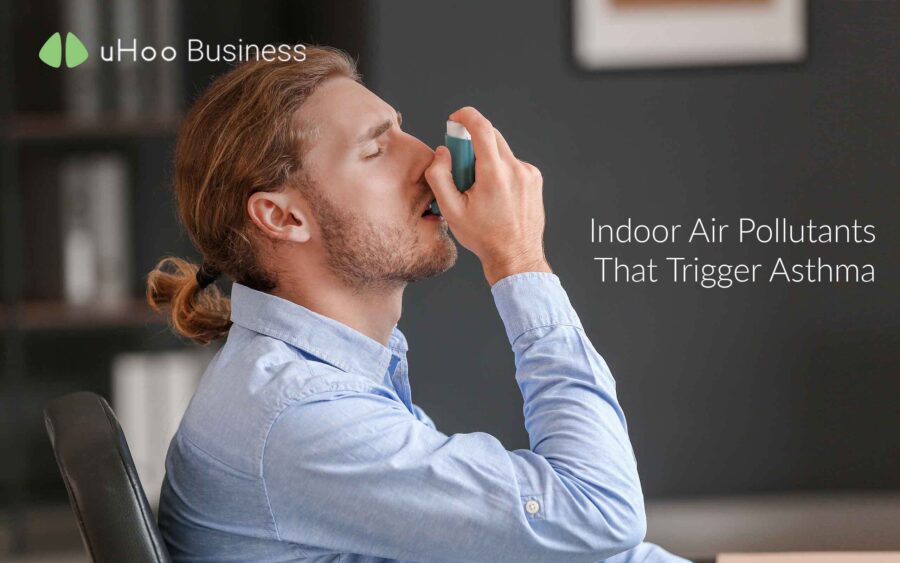One of the most common public views is that air pollution can only occur outside and that the air is always safer and healthier indoors. But according to numerous studies, many enclosed locations, including your place of work, can actually have worse air quality that may cause you, your employees and other occupants to experience respiratory problems such as occupational asthma.
What is occupational asthma?
Asthma is a chronic respiratory problem that causes inflammation of the breathing passages of the lungs. The inflammation narrows and tightens the muscles around the airways resulting in breathing problems.
Occupational asthma is a type of asthma that is caused by the exposure to a number of allergens and irritants in the workplace. Typical symptoms are the same as any asthma attacks like shortness of breath, runny nose, eye irritation, chest tightness and nasal congestion – and may subside when the person is no longer at work.
The less common symptoms of occupational asthma that needs immediate medical observation are:
- Rapid breathing
- Lack of relief from inhaler
- Difficulty in breathing in and out
- Inability to speak clearly
- Confusion or agitation
- Blue tint in the face, fingernails, or lips
An online survey result showed that workers missed nearly one-tenth of their weekly work due to their asthma. Three out of four workers felt they could not work to their full potential because of their illness and that asthma reduces work productivity by more than a third.
Indoor air quality and asthma
Offices and other workplaces are the most common locations where indoor air quality is poor and pollutants are at higher amounts, these indoor air pollutants can make your airways sensitive which can trigger the development and aggravation of asthma.
Below is the list of the key triggers that affect indoor air quality and asthma. By being aware of these triggers, one can take steps to manage them and reduce asthmatic reactions to flare up:
- Tobacco smoke
Many people consider smoke breaks as a favorite workplace stress-reliever, but smoking is the most common cause of many illnesses such as asthma.
Our lungs have tiny hairs called cilia, these hairs move in a wave-like motion to filter dust and irritants out of our lungs. Inhaling tobacco smoke damages the cilia which means that the lungs will be less capable of cleaning itself, causing toxic substances to pile up and irritate the lungs.
Tobacco smoke be it secondhand or third hand can also make asthma episodes more often and can increase the severity of each attack.
- Chemicals and fragrances
Most employees use perfumes, hairsprays and deodorants but these products, along with toners from photocopiers and chemical fumes emitted by sanitizing products during clean ups contain Volatile Organic Compounds (VOCs) that when inhaled, might contribute to worse asthma symptoms.
- Molds
Molds are fungi that are formed in wet and humid environments. These cottony-like microorganisms reproduce by releasing spores which range from 2 to 100 micrometers in size, some molds may also have substances called mycotoxins which act as irritants in allergic and non-allergic people. Both spores and mycotoxins spark asthma attacks.
Unbalanced humidity in workplaces promotes the development of molds and they are usually found in office HVAC systems, dehumidifiers, damp insulation and carpets. Mold spores may cause allergic reactions, sneezing and intense asthma attacks.
- Dust
In offices, particulate matter is commonly produced by fax machines, laser jet printers, ink-jet printers, scanners, and photocopying machines.
PM2.5 is named as the most dangerous particulate matter of all the PM categories. Fine particles with a diameter of 2.5 microns are so tiny that they can easily penetrate the lungs, damage its natural defenses and weaken the respiratory functions.
PM2.5 is known to cause asthma symptoms. In fact, a report shows the link between the exposure to fine particulate matter and the frequent use of an asthma inhaler. PM2.5 is also accountable for increased emergency room and hospital visits.
- Pests
Food and snacks are often stored in office pantries and sometimes, tiny pieces of it are left on the work desks or floors. Pests reside in areas where food leftovers, crumbs and garbage are found. Not only are they unpleasant and annoying, their body parts and droppings are known to stir up respiratory inflammation.
Waste products and the shedding body parts of cockroaches and other pests can trigger asthma. Cockroach feces and saliva contain certain proteins that can cause allergic reactions to people who are sensitive to it.
Managing asthma at work
Workplaces can sometimes become a complex environment for employees suffering from asthma. Whether you are working in corporate offices or industrial sites, there are numerous elements that can contribute to asthma which seem to be difficult to avoid. Fortunately, there are steps that you can take to manage asthma symptoms in the workplace and prevent or minimize the presence of the abovementioned indoor air pollutants.
Avoid strong odors
Some odors and scents are so common that we come across them almost everyday, but the more you can identify them as a potential asthma trigger, the easier it will be for you to manage it and help employees control their condition.
If one of your employees experiences any worsening asthma symptoms after being exposed to certain odor or fragrances within the workplace, make sure to take note of it.
Once problematic odors are identified, it’s best to avoid them when possible or if not, consult medical professionals to help limit it.
Keep your workplace clean
Some dirt is easy to see while others are microscopic and are too tiny to be visible in the naked eye. To make your office an asthma-free workplace, make sure to clean, dust and change your air filters regularly. Regular cleaning helps limit asthmagens and protects asthmatic employees from experiencing symptoms caused by the disease.
Monitor your indoor air quality
Asthmatic episodes often begin with the exposure to poor indoor air. By adopting air quality sensors for your workplace, you can be equipped with all the insights you need to make conscious decisions and enhance the air that your employees breathe and efface the causes of asthmatic reactions.
The uHoo Aura has the capability to monitor 13 parameters including VOCs, PM2.5, humidity and other factors that could be damaging your lungs and trigger asthma. With this device, you can track the trends, get access to analytics, see the days when asthma episodes are more likely and mitigate indoor air pollution.
Asthma can’t be cured, but the air pollution that contributes to its severity can be minimized and managed. Using indoor air quality monitoring devices like the uHoo Aura, we can raise awareness, make proactive changes and allow employees to grow without the fear of their health condition.
Control indoor air quality and asthma at once. Explore uHoo Aura with us today.
References:
- https://www.healthline.com/health/asthma/occupational-asthma#symptoms
- https://www.ncbi.nlm.nih.gov/pmc/articles/PMC2099323/
- https://www.cdc.gov/asthma/control/index.html
- https://www.theaircleanerstore.com/poor-air-quality-triggers-asthma/
- https://hero.epa.gov/hero/index.cfm/reference/details/reference_id/3602890
- https://pubs.acs.org/doi/10.1021/acs.est.0c06114
- https://www.pnas.org/doi/10.1073/pnas.1805647115
- https://www.dovepress.com/asthma-impacts-on-workplace-productivity-in-employed-patients-who-are–peer-reviewed-fulltext-article







